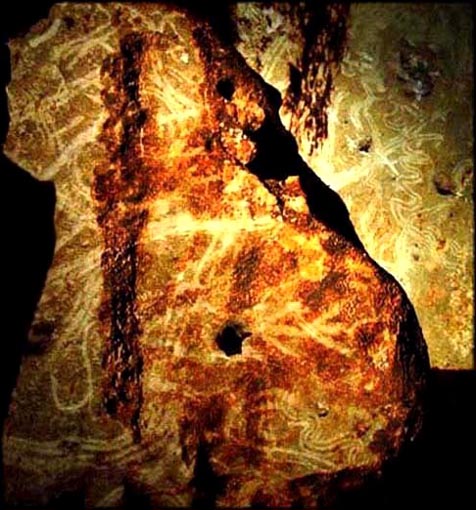Ever
more often anthropologists are unearthing fragments that theorize
another human ancestral digit.
We are such an enigma to ourselves that we still imagine images
could, by oft-repeated ritual replastering and repainting, be
coaxed through this mediating surface; each replastering and repainting
may have been a new celebration and enactment of our
creation by
a Divine Maker, tumbled from the sky,
or we emerged from beneath earth or ocean.
Scientists dream that some 300 million years ago the organism who would someday be us, with gills and fledgling lungs crawled from sea onto dry land, bringing with it the salty solutions we still distill in the chemistry of our blood.
One day several
years ago, walking the beach I presently walk, the Kiowa writer
N.
Scott
Momaday
came
upon a small octopus, "the color of bone," stranded
in
a puddle at low tide. Momaday thought it dead. But when probed with
a stick,
it changed color, grabbed the stick, and seemed to be in "profound agony." After carrying stick and creature into the surf, he left. Some time later, "a strange loneliness" came upon him, and he thought of the octopus whose life he had saved, wondering if, "in the dark night of the sea, there, deep within its own sphere of instinct, the octopus dreams of me."
If
we can dream of other species, isn't it
conceivable that they can dream of us?
Could what we call inanimate dream too,
including rocks we draw our visions upon?
Isn't it pathetically anthropocentric
to adamantly say they can't?
We
can know little of the
unconscious realm in which works of art are born;
then
by consciousness are transformed , "not loud / not
unmusical,
as
they lean / into
the rocks, away / from
my grasping fingers."
